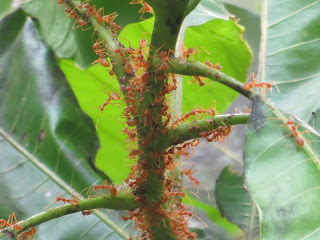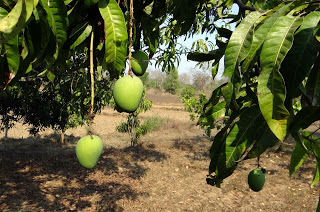Cultivation Of Mango In India
Mango also known as Amra in Sanskrit comes from a Family Called Anacardiaceca and has a botanical name known as Mangifera Indica L, it is also called as King of all fruits in India and it is also known as National Fruit of India.
Mango is believed to be originated from Indo - Myanmar region and it grows in tropical and sub-tropical regions with various temperatures, in India, it is grown widely in the states of Uttar Pradesh, Karnataka, Andhra Pradesh, Telangana, Kerala, Tamilnadu, Gujarat and Bihar.
India is the largest producer of Mangoes in the World and produces up to 37 million tons yearly and exports it to more than 40 countries worldwide, Majorly India exports Mangoes to UAE, Bangladesh, Kuwait, Saudi Arabia, USA and many more.
Now let us discuss the cultivation of Mango in India,
Soil
The Mango Plant can grow mostly in Sandy loom, alluvial, red Soil with a good drainage system, the soil should have a PH level around 5.5 to 8.0.
Climate
The Planting of Mangoes is done during the month of July to August when Monsoon begins or it is planted in the month of February to April if it is cultivated with irrigation facility, the Plant can grow rich within the area of rainfall in the range up to 25cm to 250cm.
The plant of Mango grows within a temperature of 45 degrees, the plant can grow rich in a temperature around 27 degrees.
Pits And Planting of Mango
Pits are dug at a distance of 10x10 metres between plants and dugs are filled with plentiful of Farm manure, Chlorudane dust of 100 gms is mixed to pits to avoid termite attack.
Healthy plants are preferred for plantation, the plants of Mango is planted into the pits by removing polythene bag, the soil is filled around the roots.
Training of young Plants are done so that the plant can grow in proper shape, the training is mostly done when the graft branch is low.
Fertilizers And Irrigation
The Young Plants are supplied with 100 kg of Nitrogen, 50 gms of Phosphorus and 100 gms of Potassium till a year, if the tree is about the age of 10 years it is supplied with 1kg Nitrogen, 500 gms Phosphorous and 1000gms of Potassium.
Farmyard manure is applied every year as per requirement.
The newly grafted plant is watered every 3 to 4 days, if the plant is fully grown it should be watered with an interval of 10 to 15 days, irrigation shall not be provided before 2 to 3 months of flowering, if the irrigation is continued it can reduce the crop.
Protection of Plant from Insect Pest and Disease
To control insect pest and disease carbaryl dust and Sulphur 300 is used up to 3 to 4 times in an interval and the trunks of the tree are also dusted to protect it from hoppers and pests.

Intercropping
Crops like Blackgram, Greengram, Groundnut along with Vegetables and Fruits such as Guava, Papaya and plum are grown to control the weeds and to maintain the Plant of Mango till it is grown in mature up to 3 to 6 years.
Harvesting
The Mango tree shows its maturity when the fruit colour changes from dark green to light green and the fruit mature from 3 to 5 months after flowering.
The harvesting of Mango fruit generally start after the droppings of fruit, the rotten fruits are separated from a healthier fruit and kept in a wooden box and exported to places for commercial use.
Uses
The Mango is used in the preparation of Pickels, juices, chutneys, jellies, jams, syrup and confectionaries.
My View
The cultivation of Mango can give a good amount of income if it is maintained in a healthier way, several schemes for the Farmers are provided by the Governments so that the farmers can utilize the schemes for its cultivation.
A large number of Banks provide loan facility for cultivation of Mango.








No comments
New comments are not allowed.